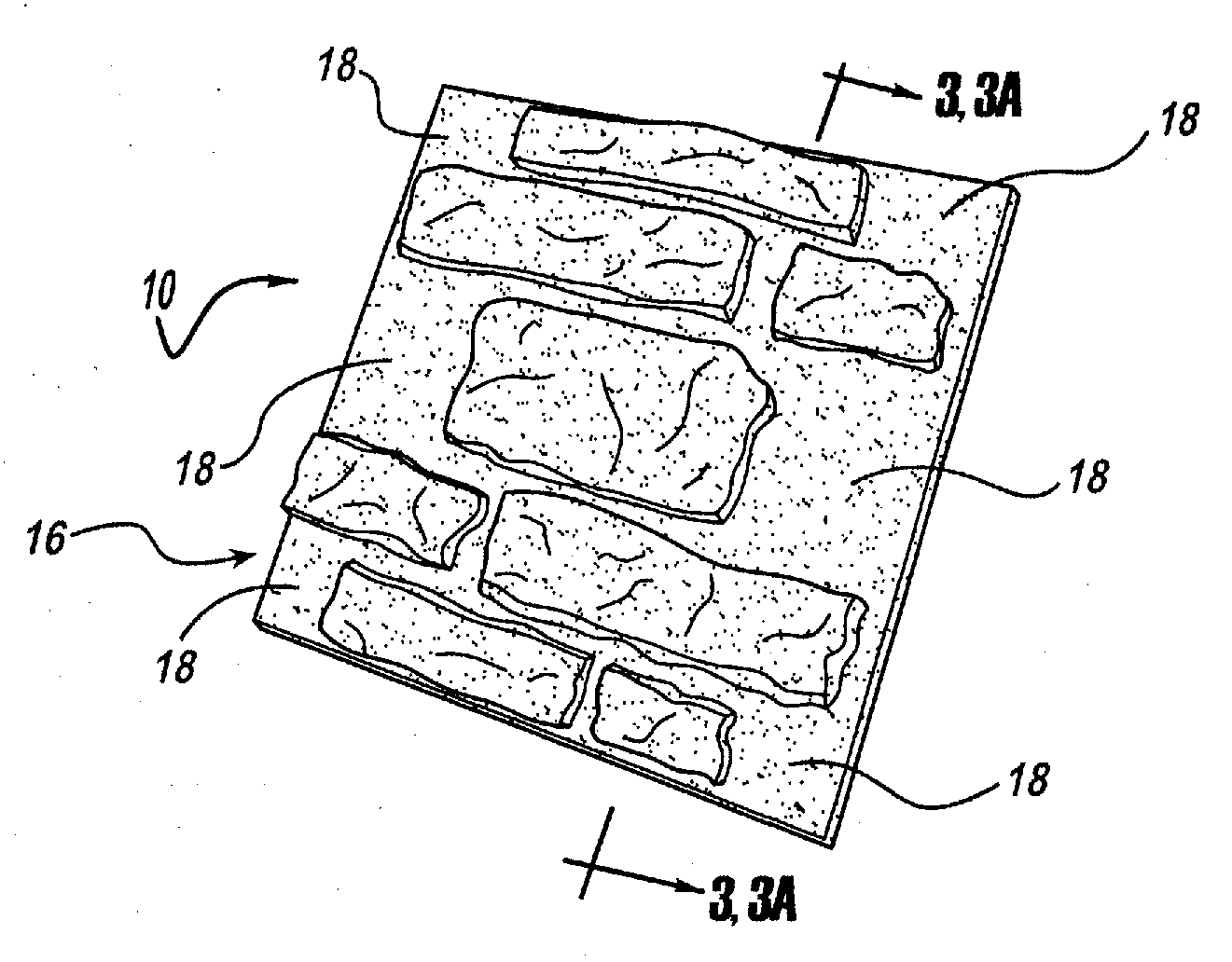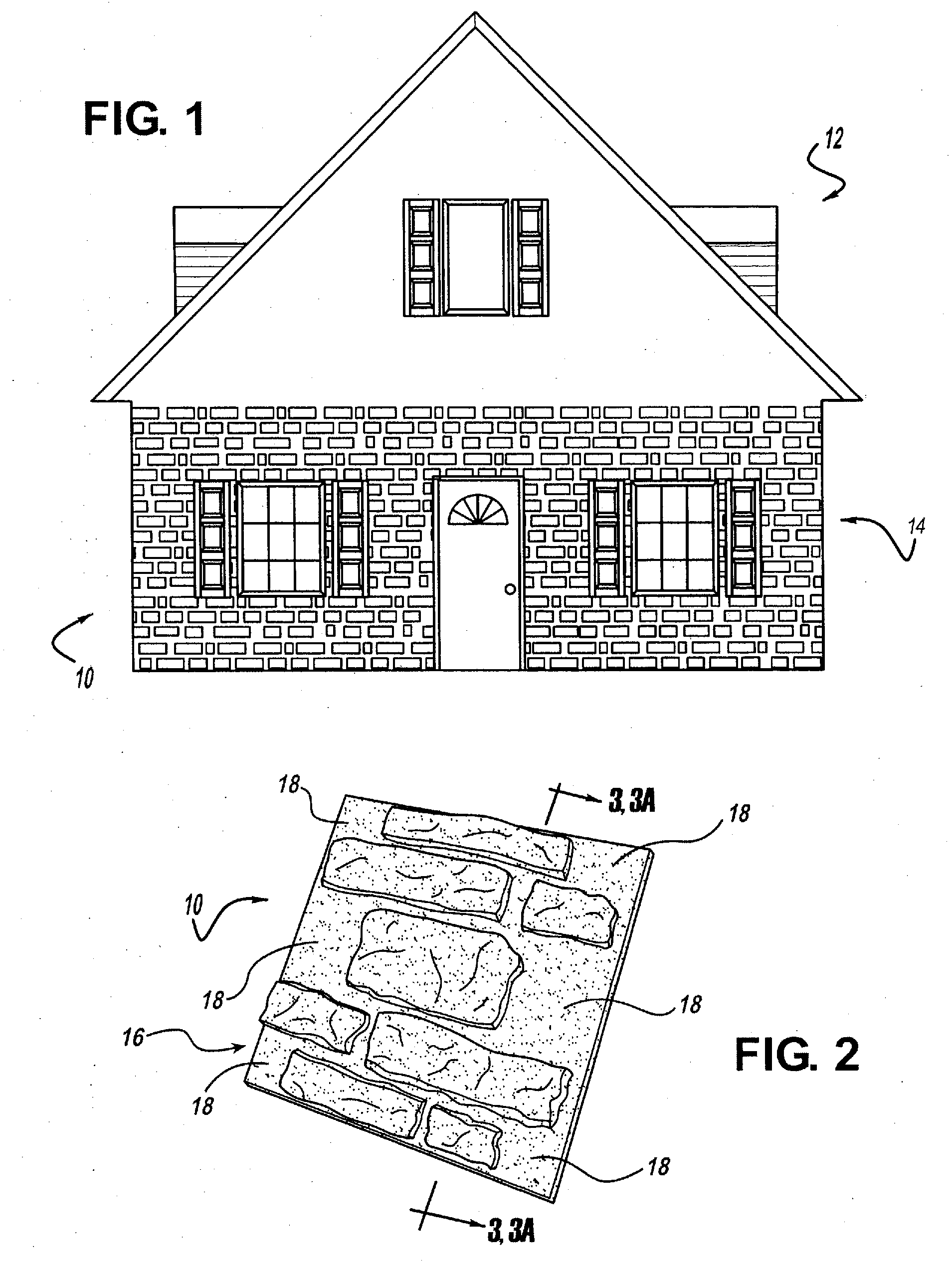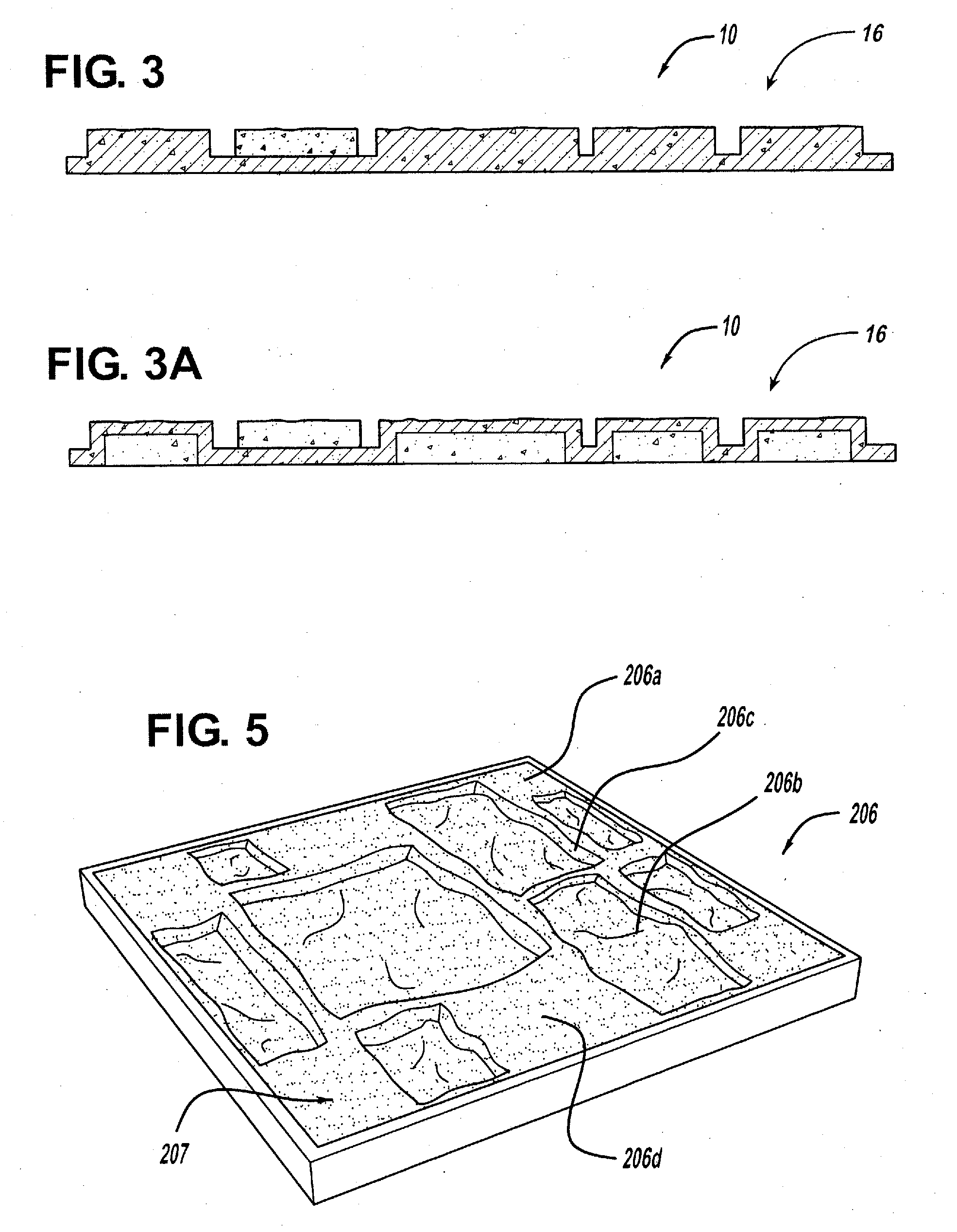Stone work simulation system
a simulation system and stone wall technology, applied in building components, climate sustainability, solid waste management, etc., can solve the problems of high cost, labor and time requirements, and high labor and time requirements for installing a simulated stone wall, facing, or facade, and the overall aesthetic appearance of the simulated system is generally not acceptabl
- Summary
- Abstract
- Description
- Claims
- Application Information
AI Technical Summary
Benefits of technology
Problems solved by technology
Method used
Image
Examples
Embodiment Construction
[0050]The following description of the preferred embodiments is merely exemplary in nature and is in no way intended to limit the invention or its uses.
[0051]Referring to the Figures generally, and specifically to FIGS. 1-4A, a stone work simulation system is generally disclosed at 10. By “system,” as that term is used herein, it is meant at least one unit of a simulated stone, simulated brick or other simulated building material product. The system can also include one or more units of simulated stone, brick or other building material product or building product produced on a single sheet or sheet-like member, such as a panel. The system can also include one or more individual building product units (e.g., simulated stone units) that are mounted individually to a structure in conjunction with the sheet members. Although the present invention will be described with primary reference to stone work simulation systems, such as but not limited to stone or brick walls, facings, and facad...
PUM
| Property | Measurement | Unit |
|---|---|---|
| Thickness | aaaaa | aaaaa |
| Color | aaaaa | aaaaa |
| Height | aaaaa | aaaaa |
Abstract
Description
Claims
Application Information
 Login to View More
Login to View More - R&D
- Intellectual Property
- Life Sciences
- Materials
- Tech Scout
- Unparalleled Data Quality
- Higher Quality Content
- 60% Fewer Hallucinations
Browse by: Latest US Patents, China's latest patents, Technical Efficacy Thesaurus, Application Domain, Technology Topic, Popular Technical Reports.
© 2025 PatSnap. All rights reserved.Legal|Privacy policy|Modern Slavery Act Transparency Statement|Sitemap|About US| Contact US: help@patsnap.com



